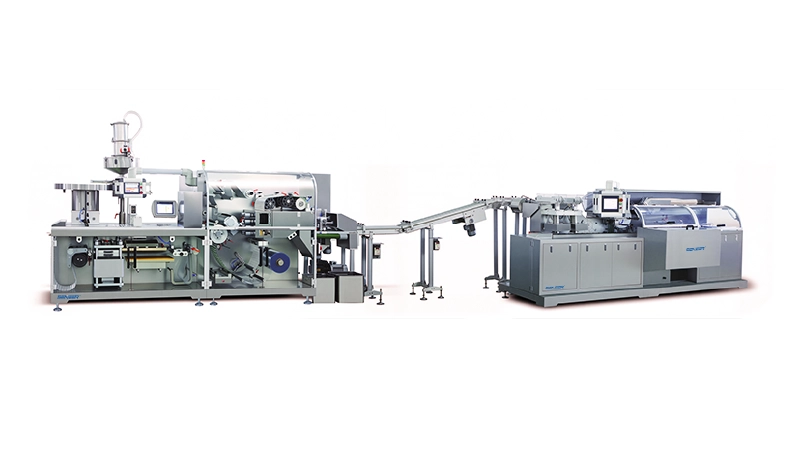Blister Packing Machine
Senieer prime blister packing solution meet diverse pharma and nutraceutical packing needs.
Suit for ALU/PVC, ALU/ALU. Senieer improve roll type and plate type.
Servo technology ensure robust forming and sealing, guaranteeing accuracy.
Easy interchange different molds.
Introduction of Blister Packing Machine
Blister Packing Machine is a packaging equipment widely used in pharmaceutical, food, nutrition and other industries. It encapsulates medicines, capsules, tablets, candies and other products in transparent plastic or aluminum foil bubbles through heating and shaping, which plays a role in protecting the products, extending the shelf life, and facilitating storage and transportation. It has the characteristics of good sealing, compliance with hygienic standards, and space saving.
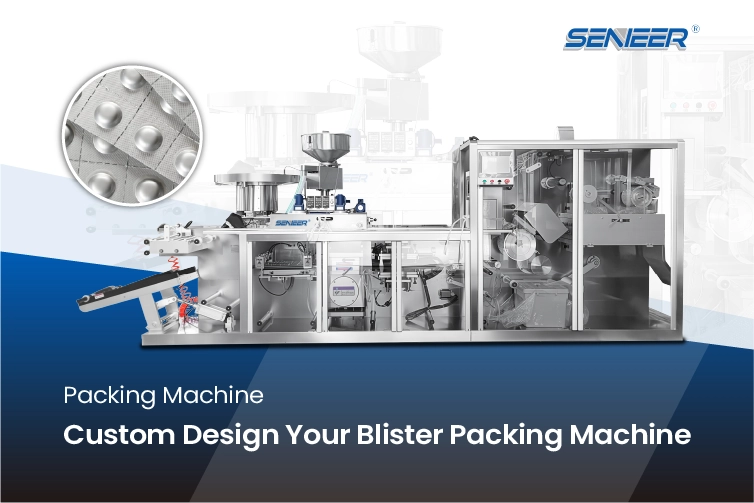
Different Types Of Blister Packing Machine
Senieer blister packaging machines range from experimental, small to large-scale equipment to meet the production needs of the pharmaceutical industry at different stages. From R&D testing to mass production, each model undergoes precision design and strict quality control to ensure that customers are provided with reliable packaging solutions under the premise of efficiency, accuracy and safety.
Choose Your Blister Packing Machine
Whether you are in the pharmaceutical, food or cosmetics industry, Senieer blister packaging machines can provide you with excellent packaging solutions. With precise craftsmanship and flexible customization options, Senieer can help your production line improve efficiency, ensure product safety, and meet the market’s strict standards.
The products (capsules/tablets) are introduced into the packaging materials via the blister packaging machine’s feeding mechanism. then move through the sealing, printing, and cutting stages before being transferred to a synchronous belt for robotic handling. Upon receiving a signal, the robot(option item) picks up the blisters and places them onto the cartoning machine ‘s material chain. The cartoner sequentially performs instruction: suction, carton picking, carton loading, carton sealing, and output. The cartons are then weighed and inspected by an electronic monitoring system, with defective items automatically removed. The acceptable cartons are transported to the case packer, which completes the workflow through stages of sorting, case unpacking, grabbing, case sealing and packing, and output.
Guidelines For Blister Packing Machine
Blister packaging machine uses materials such as plastic film and aluminum foil to package tablets, capsules, medical devices or small products into independent blister units through steps such as heat forming, filling, and sealing to ensure product safety, pollution-free storage and easy transportation.
It integrates machinery, electricity, light, air, and water, and combines the advantages of plate-type and plate-roller type blister packaging machines. It adopts computer control, modular design, servo step drive, high-speed feeding, so that it achieves high production efficiency, compact structure, simple operation, easy to replace the mold. The machine meets the requirements of GMP and is widely used for blister packaging of drugs, health products, medical devices and electronic components.
Characteristics Of Blister Packing Machine
High degree of automation
Senieer blister packaging machines are equipped with intelligent control systems that can automatically complete a series of processes such as feeding, forming, sealing, and cutting, which significantly improves production efficiency. In addition, some high-end models of blister packaging machines also have intelligent parameter adjustment and fault diagnosis functions, which can further improve the stability and reliability of operation.
High sealing and stability
The blister packaging machine has extremely high sealing performance in terms of sealing and can isolate air, dust and moisture. It is especially suitable for products that have strict requirements on the storage environment. At the same time, the packaging film material of the blister packaging machine usually has good durability, ensuring the safety of the packaging contents.
Wide adaptability
Blister packaging machines are suitable for products of various shapes and sizes, and the packaging materials are diverse. Different models of equipment can support PVC, aluminum-plastic and other materials. The equipment is also capable of adapting to a variety of products such as capsules, tablets, candies, electronic components, etc., making it widely used in multiple industries.
Energy saving and environmental protection
Many modern blister packaging machines are designed with energy saving and environmental protection factors in mind, which not only reduces material waste, but also reduces energy consumption in equipment operation. Some equipment also has waste recycling functions, which contributes to environmental management during the production process.
Easy to operate
Blister packaging machines are usually designed with humane operation in mind. Most equipment is equipped with a touch screen control system. Operators can easily set packaging parameters and monitor equipment status, and equipment maintenance is also relatively simple and convenient.
Features Of Blister Packing Machine
1) HMI, PLC program control, variable frequency speed adjustment.
2) Servo step, no synchronization problem, no step distance limitation.
3) Roll type fast speed
4) The plate type to form the bubble so the forming area is large, adopt rotary type sealing and the sealing quality is good.
5) Easy to change and adjust the mold.
6) Noise is below national standards and working conditions complied with GMP Standard.
How does Blister Packing Machine Work?
1. Forming the Blister (Thermoforming or Cold Forming)
A plastic film (usually PVC or PET) is heated until it becomes pliable. The softened film is then pressed into a mold using air pressure or mechanical force to create the cavities (or “blisters”) where the products will be placed.
Cold forming: For more sensitive products (like pharmaceuticals), cold-formable materials like aluminum are used without heating, pressing into shape by a mold.
Product Loading
Once the blister cavities are formed, the products (such as tablets, capsules, or medical devices) are automatically or manually placed into each cavity. This step is done with precision to ensure proper placement without contamination.
Sealing
After the product is loaded into the cavities, a sealing layer (typically aluminum foil, plastic, or a paper laminate) is placed on top. This layer is bonded to the plastic blister using heat and pressure (for thermoforming), or mechanical pressure for cold-formed blisters, ensuring a tight and secure seal.
The seal protects the product from moisture, contamination, and tampering, ensuring its safety and extending its shelf life.
Cutting and Perforation
After sealing, the blister packs are cut into individual units or strips. Perforation can be added between each pack unit, allowing consumers to tear off one or more doses without opening the rest of the package.
Inspection and Quality Control
The final blister packs undergo quality checks, including visual inspection and leak testing, to ensure that each pack is sealed correctly and contains the right number of products in each cavity.
Combination equipment
- Combination with cartoning machine
The combination of blister packaging machine and cartoning machine can realize the integrated production of products from blister packaging to automatic cartoning. After the blister packaging machine completes the forming, filling and sealing of the product, the product is automatically transferred to the cartoning machine through the conveyor system, and the packaged blister product is loaded into the carton.
- Combination with pillow packaging machine
Pillow packaging machines are typically used to further package multiple blister packaged products into one or more packages. Pillow packaging machines can quickly package blister products into bags for easy storage and transportation.
- Combination with testing equipment
Testing equipment is used to monitor product quality in the blister packaging process in real time, including missed inspections, lack of materials, sealing quality inspection, etc. Common detection equipment includes photoelectric detection systems, air leakage detection systems and visual detection systems.
- combination with labeling machine
Labeling machines are usually used to automatically attach labels to products after packaging is completed. It can automatically paste product information, barcodes and other labels on blister packages or finished product boxes.
- Combination with weighing equipment
Weighing equipment is used in conjunction with blister packaging machines to ensure that the weight of the product in each blister package reaches the standard. This is especially important for industries that strictly control the dosage of pharmaceuticals, food and other products.
Application
1.pharmaceutical industry
Blister packaging machines are widely used in the pharmaceutical industry and are mainly used for packaging capsules, tablets, granules and other pharmaceuticals. Blister packaging machines can effectively isolate medicines from contact with air and moisture, thereby extending the shelf life of medicines and preventing medicines from getting damp, oxidized or contaminated due to exposure. In pharmaceutical production, the high sealing and safety of blister packaging machines is one of the key factors to ensure the quality of pharmaceuticals.
2.Food industry
In the food industry, blister packaging machines are mostly used for packaging small foods such as chewing gum, candies, and chocolates. Blister packaging can not only improve the preservation effect of food, but also facilitate product display and attract consumers’ attention. At the same time, blister packaging machines can also effectively prevent food from deteriorating due to external environmental pollution.
want to customize it or learn more? welcome to contact Senieer.
Choose Your Interested Production Line
Bottle Filling Line
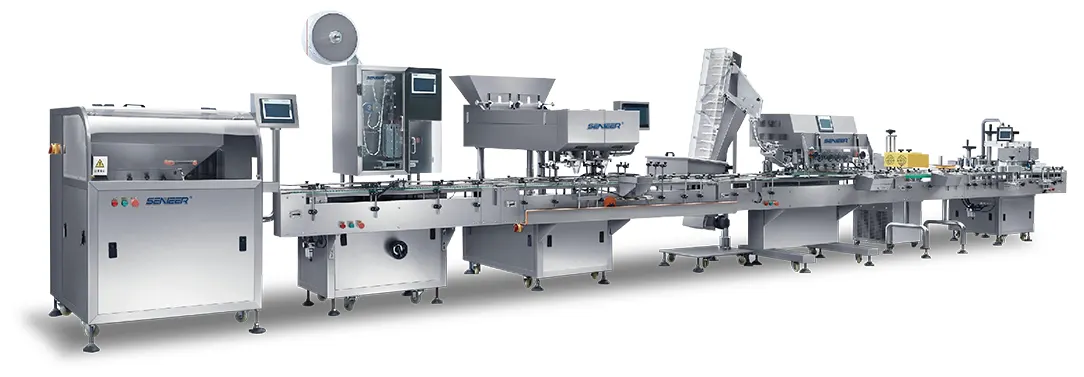
Granulation Line
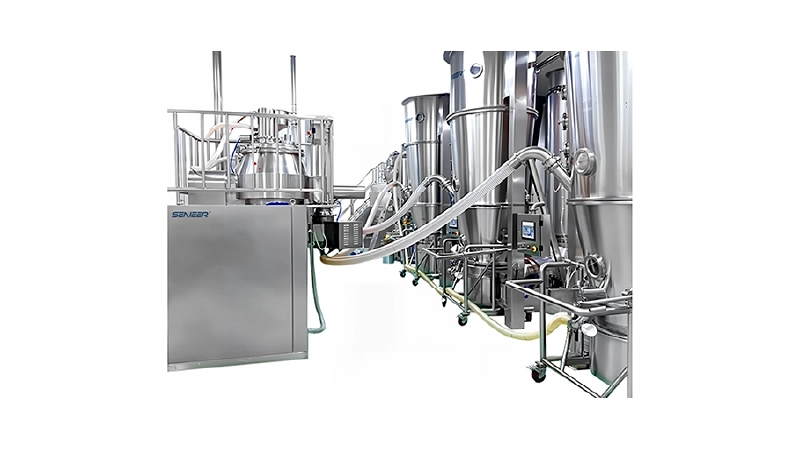
Blister Packaging Line
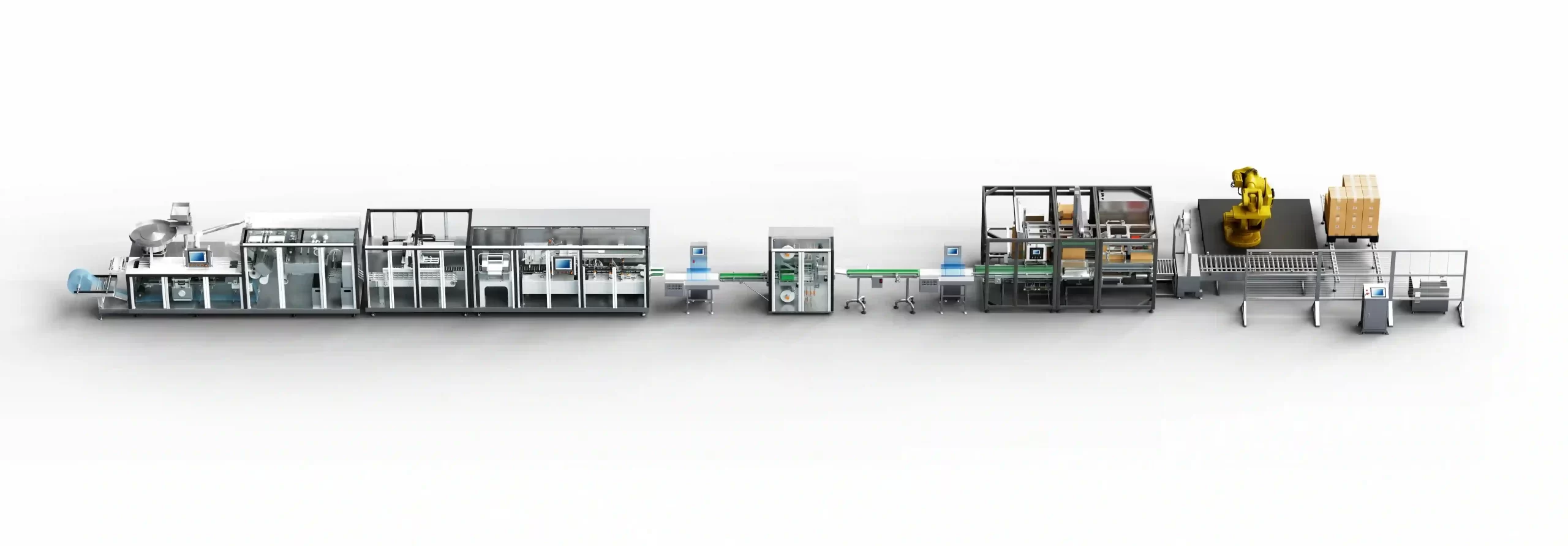
Powder Filling Line








